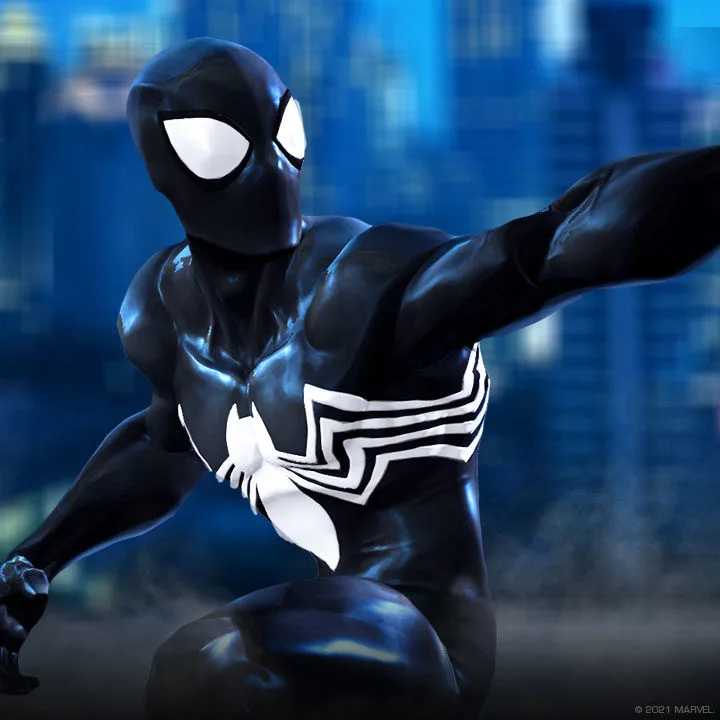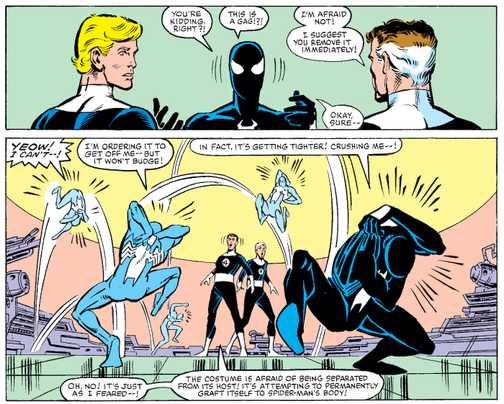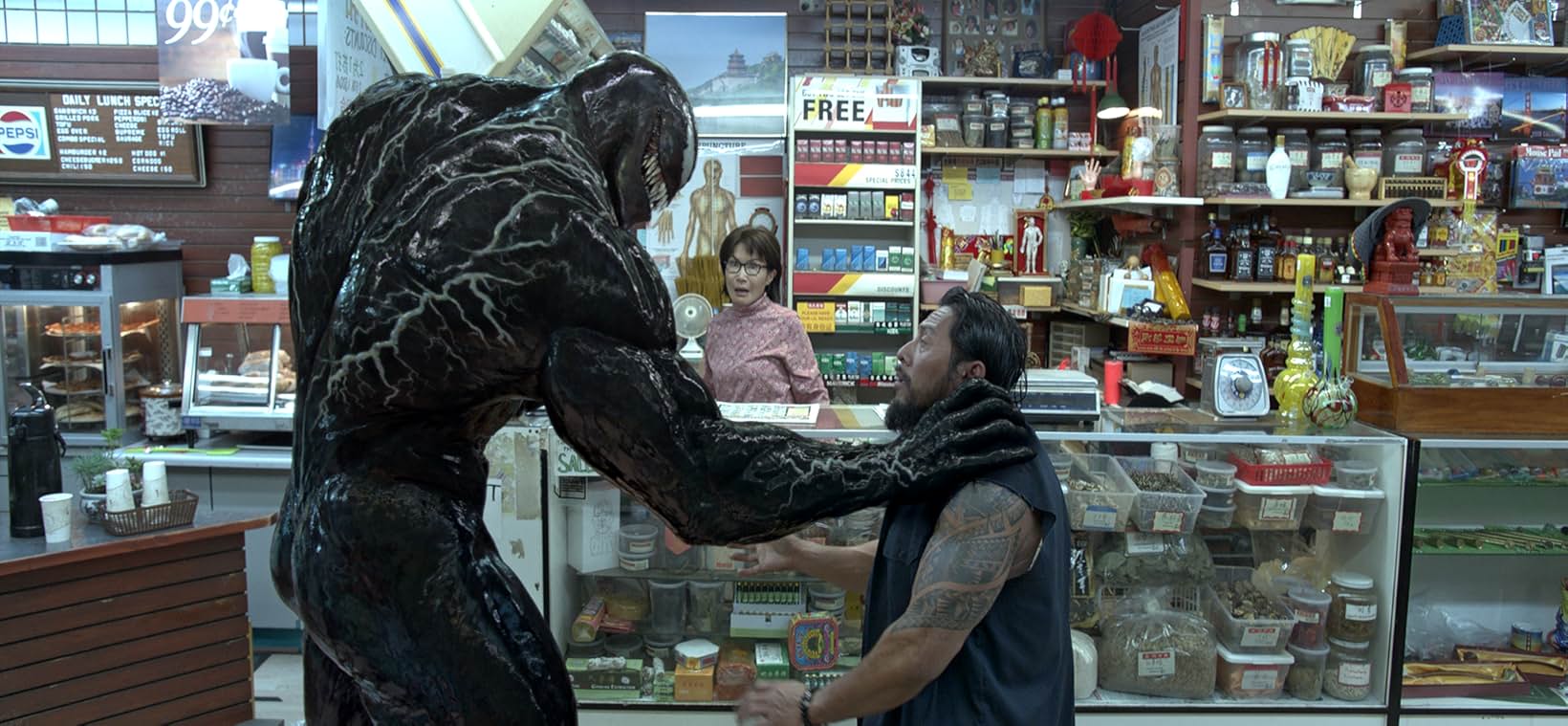Symbiote, the character from Venom, and Spider-Man’s black suit have always been under discussion and controversies for many years. The storyline, which was widely popularized by the 1990s “Spider Man: The Animated Series,” the image of the symbiote suit and Venom has been shaped in Marvel’s cosmos.
Nevertheless, the appearance of the black suit and Venom in this series differs a lot from their portrayal in the comics, which resulted in what some consider a ‘Mandela Effect’ among the series fans.

Symbiote Costume and Spider-Man’s Behavior
Probably one of the most popular misconceptions is connected with the changes in Spider-Man’s behavior due to the black suit. In ‘Spider-Man: The Animated Series,’ it was seen in the animated series that the black symbiote suit makes Peter Parker more aggressive and violent. This version of the story also points out that the alien suit is the cause of Spider-Man becoming a more aggressive character who frequently loses control over himself, with Peter being the same.
Another film series that developed this concept was “Spider-Man 3” by Sam Raimi, in which the black suit represents the malevolent force that turns Peter Parker into the self-obsorbed and vengeful phantom. This portrayal then set the foundation for the idea that the symbiote was evil in its nature and modification of its host and their personality.
However, this depiction cannot be closely compared to the one that is given in the comic books where this story originated from. In the comics, when Peter first puts on the black suit, his behavior is not different much from the nice person he was. Indeed, his first scenes with other characters while being in the suit are completely opposite to what people who have watched cartoons and the movie based on them might expect.

Venom: The Mandela Effect
The fans think that the symbiote suit makes Spider-Man a darker and more dangerous character; this is widely believed but, in fact, is a mere Mandela effect. As was seen in the recent output of the Marvel comics, the character of Peter hardly had anything to do with its inherently aggressive nature. It may even be said that it enhanced his performance as Spider-Man, which did not radically change him as a character.
For example, by donning the black suit, the first thing Peter does is to prevent a mugging, not by thrashing the would-be thief to a pulp but by driving him away. He then finds two lovers who seem to be having a quarrel with each other; he has them take a tour of New York City, and in doing so, they both are made to see the beauty within the city where they reside.
These actions reveal a Spider-Man that is far from being overwhelmed; in fact, he is in control and probably the friendliest Spider-Man that media have seemed to portray in their animations, particularly one donning the black suit with violent tendencies.
[ Also Read: Spider-Man 4 Villains: Who Do Fans Want to See Take on Tom Holland? ]
The Impact on Peter’s Personal Life
The black suit may not transform Peter into a violent aggressor in Spider-Man, but it did affect him in his personal life. This ability was helpful to Peter when bonding with the suit, as he was out fighting crime during the night, even without realizing it, and often grabbed sleep at work, leaving him tired and causing a great deal of strain in his relationships.
There are many examples of Peter’s problematic relations with the female characters, and one of them is his dangerous attraction to Felicia Hardy, the Black Cat, as their relations were damaged because she preferred Spider-Man over Peter Parker.
Also, the relationship with Mary Jane turned sour as she quite unexpectedly states that she knows about his double life, which puts enormous pressure on Peter. Most of these problems were not a direct outcome of the symbiote suit but attributed to Peter’s clandestine life. The notion that it was the suit that turned Peter into an aggressive and evil creature was not something that was established in the comic books but rather a development from the animated series.

Venom’s Entry and the Evolution of the Symbiote’s Story
It is also pointed out that the modern view of Venom also came from the animated series. When Peter finds out that the symbiote is alive and is in danger and goes to Reed Richards of the Fantastic Four to shed off the suit. This rejection makes the symbiote angry, and one day it decides to bond with Eddie Brock, a reporter who also has ill feelings towards Spider-Man. The two merge together to become Venom, who is an arch enemy of Spider-Man.
This storyline, however, is similar to the comics storyline but has some differences. In comparison to the comic version, the animated series and its adaptations drew much more attention to the negative sides of the symbiote, in particular to the character of Eddie Brock or Venom. The connection in the comics between the symbiote and Eddie Brock was that the two of them hated Spider-Man more than anything else, and it gave the creature a method of control over the suit to begin with.

The Legacy of the Animated Series
“Spider-Man: The Animated Series” made a lasting impact on how fans and subsequent adaptations looked at the symbiote and Venom. Sensing this, the concept of the symbiote as being a corrupting influence was popularized in the media and became what is now known as the typical Venom.
However, this interpretation is not necessarily from the Monkman comics but from its animated series adaptation, which shows how adaptations necessarily build these so-called “Mandela Effects” that alter the specific ways that we recall and interpret significant comic characters.
